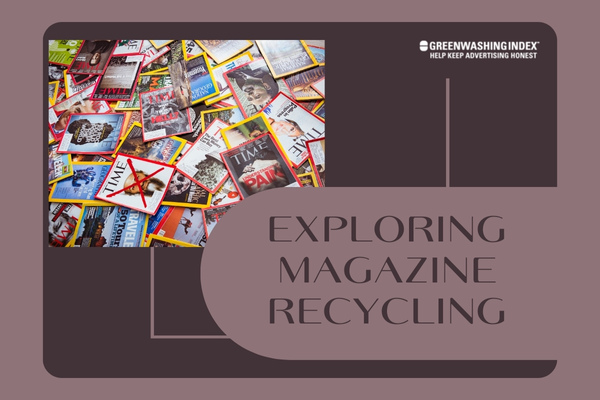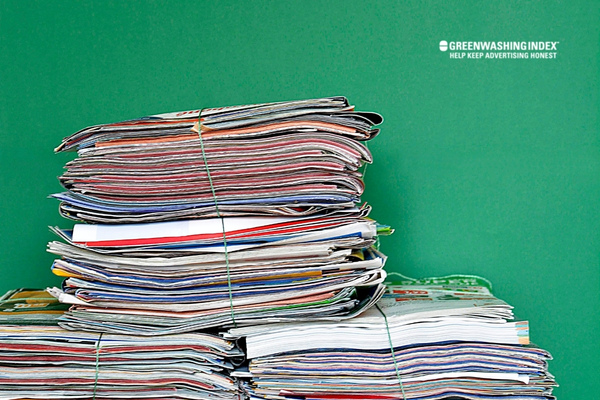

Let’s embark on an illuminating exploration of the underappreciated realm of magazine recycling. Amid a climate crisis where every little effort counts, our seemingly insignificant choice to recycle or not can indeed make or break our earth’s future. While we might not give a second thought to the stack of magazines piling up in our living rooms, think again.
Could these glossy pages be more than just last month’s news? Can they serve a purpose beyond their initial reads and contribute positively towards sustainability?
Magazines serve as valuable sources of knowledge and entertainment for many; however, their life do not need to end when their content becomes outdated. By participating in magazine recycling, you allow these spent materials to reclaim life anew!
You’d be surprised how an old issue of Vogue could transform into something altogether different but equally useful – perhaps paper towels for your kitchen or packaging for an Amazon order.
In this read, you’ll reap:
Magazine recycling, while seemingly straightforward, is a process that involves various steps and plays a significant role in driving sustainability. Let’s dive into the dynamics of magazine recycling and understand its importance in today’s world.
Magazine recycling is a fascinating process, one that takes us full circle in the lifecycle of print media.
Be it crafting eco-friendly publications or your everyday office papers, this is essentially how magazine recycling works!
Recycling paper products as common as magazines holds far more significance than one would imagine:
Thus, in today’s world, where severe climate changes are causing global concerns, I find it increasingly important that we take steps like magazine recycling towards making the earth more sustainable and healthier for future generations.
The journey to an eco-friendly existence begins with the understanding that sustainability is a vital element of our lifestyle. Two crucial aspects of this involve minimizing our negative impact on the environment and transforming our waste into something productive. This profound realization brings us to explore a concept that stands at this intersection – Magazine recycling.

Let’s dive now into the environmental footprint left by producing and discarding magazines in a non-sustainable way. The production process for one magazine alone isn’t trivial. It necessitates energy, water, and other resources, which all contribute to its environmental footprint.
With all these impacts clearly outlined, perhaps it’s time we consider magazine recycling as more than an afterthought but as a central pivot around which our reading habits revolve.
Now let’s unveil the benefits you may not have known about magazine recycling:
Incorporating magazine recycling into our routine contributes to a more sustainable world by reducing waste, conserving natural resources, and saving energy. By understanding the real impact of our consumption choices on the environment and actively deciding to participate in solutions like Magazine Recycling, we are making a powerful statement about the kind of world we want to live in.
In the journey to sustainable living, magazine recycling is a step forward. With commitment and some prep work, you can lead your own initiative – either by finding local collection centers or by starting one where you live or work. That’s not all. It’s equally important to know which type of magazines is recyclable.

Before diving into how you can get started, don’t forget that recycling starts when there’s something to recycle! One might wonder what to do with piles of old magazines cluttering up the house or workplace. Here’s an idea – scouting for local collection centers.
Next up is understanding which types of magazines are indeed recyclable. It may come as a surprise, but not all kinds can go directly into the recycle bin!
Regardless of their type, please make sure the magazines are clean and dry before you recycle them. Remember, magazine recycling is all about adapting to a culture of sustainability! So, let’s hop on this bandwagon for a greener future.
Despite its numerous benefits and the urging need for sustainability, magazine recycling is not without its fair share of challenges. As I grappled with this concept, I continually found two issues that seemed to create substantial hindrances – the quality of paper and the issues surrounding collection & segregation. Let me delve further into each aspect below.
The first major obstacle to magazine recycling lies in the quality and composition of the paper itself. Most magazines are rife with high ink content and sport a glossy finish – factors that pose a considerable challenge during recycling. Here’s why:
Overcoming these challenges might call for technological adaptations or preferring eco-friendly publications with less glossy finishes and minimalistic design strategies where possible.
A second formidable barrier is associated with collecting and segregating magazines from other paper waste generated from varied sources like households or offices. Let’s walk through them:
Addressing these hitches requires a significant effort in public education about segregation at source, while authorities should strive towards more efficient collection systems.
Navigating through the challenges of magazine recycling is primarily about tackling these issues related to paper quality and systematic waste collection & segregation. However, addressing these hurdles head-on can potentially pave the way towards transforming it into an eco-friendly reading habit that aligns with our sustainability goals.
After all, the path to paper waste reduction might be riddled with obstacles, but as they say – where there’s a will, there’s a way!
Getting people involved in magazine recycling efforts plays a crucial role in achieving sustainability. It’s all about creating a culture of responsibility towards our environment. This not only helps to manage waste from used magazines but also promotes the adoption of eco-friendly habits. Let’s dive into some inspiring success stories from across the globe.

The culture of magazine recycling is going global, with numerous communities embracing sustainable reading materials and effectively carrying out magazine recycling efforts. Here are a few that caught my attention:
These inspiring examples underscore how strategic actions tailored to each community can stimulate active participation in magazine recycling programs.
It may seem that individual actions like this don’t make much difference considering the volume of global paper waste but remember: It all adds up! Each one has a part to play in supporting days without landfills filled with discarded reading material; tomorrow where our favorite journals turn into new products rather than environmental liabilities!
I believe we could all play our part in contributing to this sustainable exploration of magazine recycling and paper waste reduction. Let’s recycle, reuse, reduce, and keep our planet green!
Yes, it’s possible to recycle most types of magazines. However, the process might vary depending on the magazine’s paper quality such as high gloss or ink content.
Recycled magazines undergo a process in which they’re broken down into pulp through de-inking and pulping. The pulp is then used to produce new paper products, reducing waste and the need for raw materials.
Businesses should consider magazine recycling as an essential element in their sustainability strategies. It reduces waste sent to landfills, conserves resources, minimizes pollution, and supports circular economy efforts.
In my journey exploring magazine recycling, I’ve seen how sustainability in print media is more than just a flashy trend. It’s an environment-friendly necessity. Recycling paper products reduces our carbon footprint and significantly decreases paper waste.
Magazine recycling not only conserves resources but also lessens pollution, uplifting the eco-health of our planet. Yet, it’s not without its challenges – high ink content and ensuring proper segregation require strategic planning and commitment.
Nevertheless, the success stories from across the globe affirm that these hurdles can be conquered with community involvement, making magazine recycling a practical reality.

Don't let aphids, slugs, and caterpillars ruin another plant. Take back control with simple, natural methods that actually work.